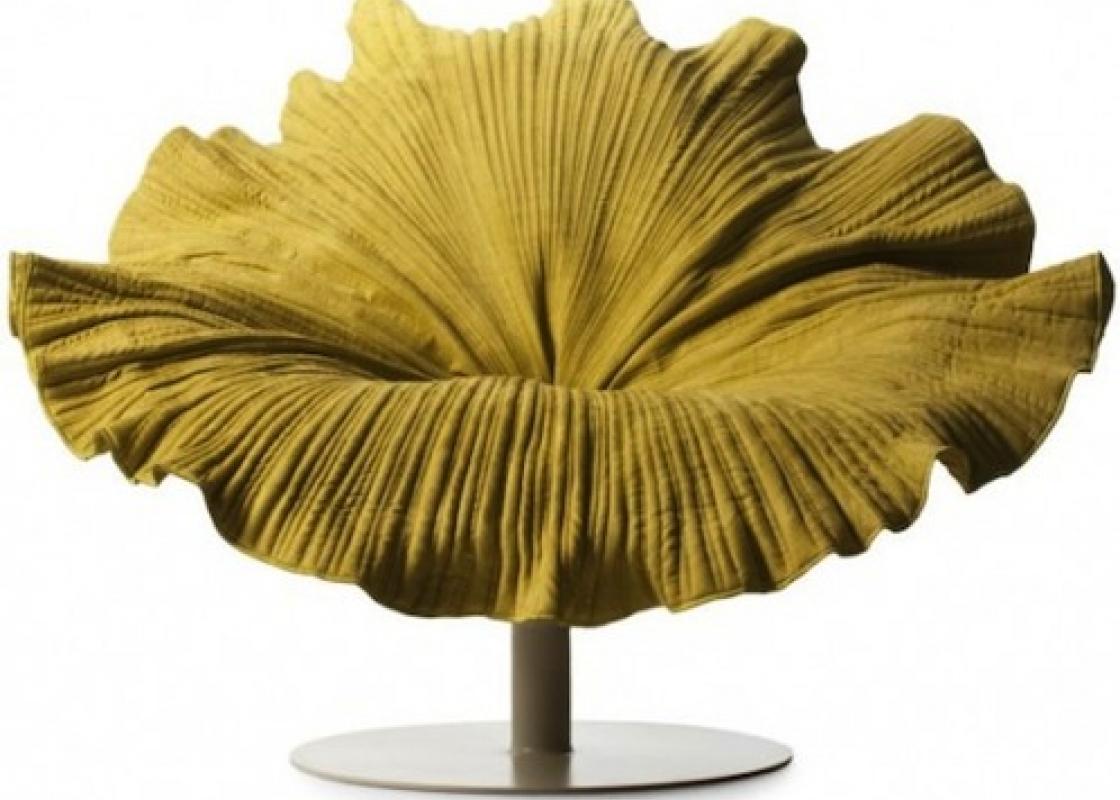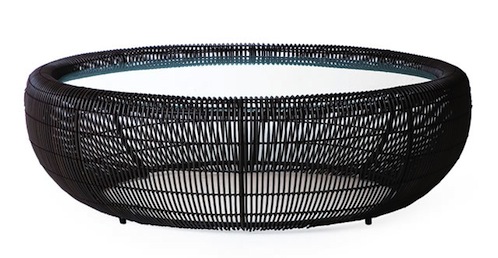
Kenneth Cobonpue's Croissant table.
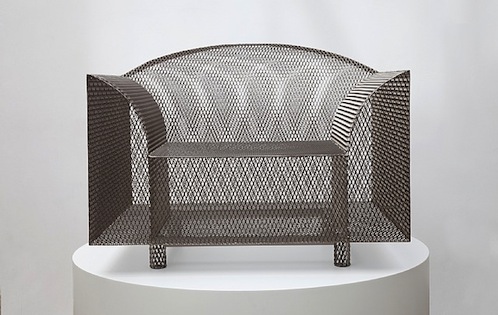
Shiro Kuramata’s How High the Moon chair
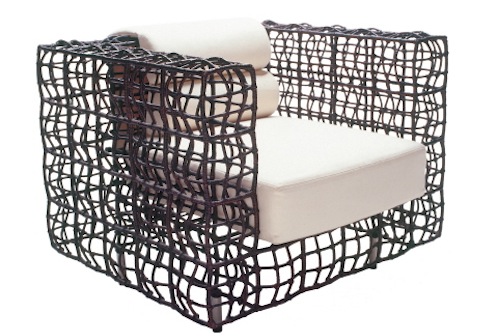
Cobonpue's "Yin Yang" chair

Cobonpue's "Yoda" sofa
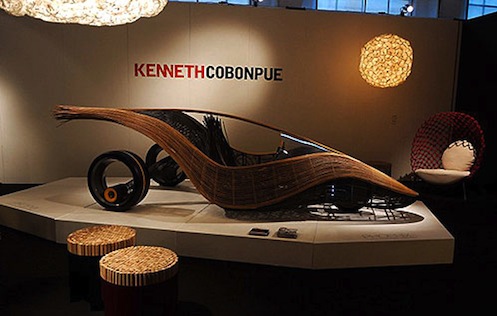
Cobonpue's Phoenix car
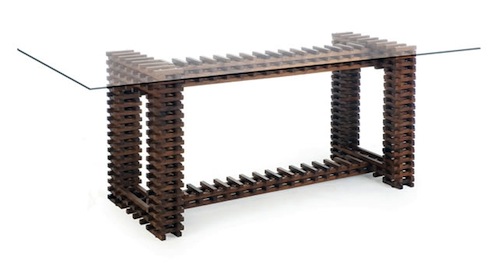
Cobonpue's Retaso table
This post covers the second lecture in the Rice Design Alliance's three part series, "FURNISH." If this or our earlier post on Mike & Maaike captivate you, be sure to attend the final and not-to-be-missed lecture by Jurgen Bey.
Locally sourced. Organic. Sustainable. Hand-made. These buzzwords are now ubiquitous in every design discipline. And, at the RDA lecture featuring Kenneth Cobonpue, I heard them a lot. I started to wonder which came first: the design or the buzzwords? Is he following a deeply considered process or cashing out on a marketing trend?
Cobonpue grew up around design in the Philippines. His mother, an interior designer, worked with rattan furniture and even secured patents for a lamination process. In 1987, Cobonpue attended Pratt Institute, followed by a stint in Europe working through several apprenticeships. In 1996, he returned to the Philippines to take over his mother’s workshop. He found a much different world than the one of his education. Where Cobonpue had been trained to design for machine production, the Philippine workers offered him their hands.
Reminiscent of Shiro Kuramata’s How High the Moon chair for Vitra in 1986 (currently on display at the MFAH’s The Spirit of Modernism exhibition), one of Cobonpue’s earlier pieces, Yin-Yang (1998), softens the crisp metallic edges of the earlier design while maintaining an emphasis on the negative volume. The rattan-wrapped steel frame topped by a cushion is more relaxing, inviting. Cobonpue’s attributes his insistence on transparent volumes to an epiphany he had while walking through the woods. The sunbeams broke through the canopy and folded around the trunks, highlighting the space between the trees, around the structure of the forest. His early designs combine the rigidity of a steel frame with the negative space of “loosely” woven rattan, most notably in Croissant (2001), with its sweeping tube-like shape, Lolah (2003) the seemingly squashed piece aptly designed after a crushed aluminum can, and Yoda (2002) the quirky easy chair that refuses to trim its split ends.
Cobonpue didn’t settle for rattan-wrapped steel, though. He began to experiment with other fibers like abaca as well as fabrics. Papillion (2011), Dragnet (2006), and Bloom (2009) show how a good design aesthetic can, and quite possibly should, cross both material and production lines. Amaya (2003) evokes the vernacular fishing nets used by local Philippine fisherman. In this piece, the exterior structure and weaving form an hourglass shape, creating two empty volume.
Cobonpue has since expanded into lighting (Halo and Dragontail) and even automobiles with Phoenix, a rattan-wrapped car for the 2011 “Imagination and Innovation” exhibit in Via Tortona in Milan. As an aside, Kenneth revealed that his furniture and lighting were originally slotted for the back of the third floor. While speaking with the curator, he asked if he could get a better location if he brought a rattan car. Not only did the curator agree, but told Cobonpue that he could be at the front. The sleek and compact form, flowing wave-like from tip to end, greeted everyone at the 2011 exhibit.
In all, the lecture was an odd combination of autobiography and tradeshow presentation. Though I haven’t been a regular attendee at RDA lectures, I do have around a dozen notches in my lecture series belt, and, thus far, Kenneth Cobonpue is the sole lecturer to use music. At first, I thought that someone needed to turn off their cell phone or something with the auditorium’s computer had gone wrong. After several agonizing seconds, though, no one was reaching in their pockets, Kenneth remained calm, and RDA employees weren’t rushing to the podium. The soft techno/electronica hybrid was intentional and brought back memories of an international car tradeshow I attended in Germany several years ago. Cobonpue’s presentation ended up feeling like a catalogue of furniture and other projects with carefully inserted anecdotes about inspiration and production.
So, what about all those buzzwords? They certainly peppered the presentation at convenient times. What struck me, however, is that Cobonpue’s claims to sustainability are legitimate and emerge from a longterm exploration of function, beauty, and making. Despite currently importing materials due to deforestation issues in the Philippines, Cobonpue’s manufacturing still can be argued to have a small carbon footprint. Over two hundred and fifty local laborers are employed by Cobonpue to hand-craft each item in the production line, from preparing the rattan strips to bending the steel frames. Rattan is a fast growing local material that can be sustainably farmed and harvested. His Retaso line (2005) was effectively designed by his son, who started stacking the small leftover blocks from production of other pieces.
Cobonpue’s dedication to an aesthetic and vernacular process has fueled his long and consistently evolving career. The result of that dedication: locally sourced, organic, sustainable, hand-made products. After he realizes his dream of an electrical engine to power Phoenix, who knows what disciplines Kenneth Cobonpue will tackle? We can be sure, however, that he’ll bring his responsible design practice and aesthetic insistence with him.
by Michael Rhodes


